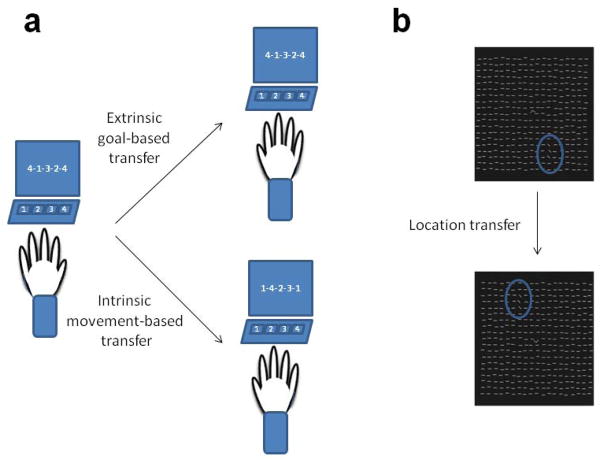Figure 1.
Illustration of representative generalization tasks in motor and perceptual learning. (a) In the sequential finger-tapping task, generalization can be measured when subjects are trained to tap a sequence (4-1-3-2-4) with their left hand as quickly and accurately as they can during limited 30 seconds trials (Karni et al., 1995). Performance is measured for example as the average number of correct sequences per trial at the end of training. Then, subjects are tested with the untrained hand. In extrinsic goal-based transfer, the tapped sequence is maintained, however the movements are now different since they are performed with the right hand. In intrinsic movement-based transfer, the movements are performed by the same fingers, only now with the right instead of the left hand, therefore the sequence tapped is different. (b) In the texture discrimination task (Karni and Sagi, 1991), a target is defined as an array of three diagonal bars embedded in a background of horizontal bars. The presentation is briefly displayed on the screen, and subjects are required to discriminate whether the target array was in a global vertical or horizontal orientation. To enforce fixation, a letter discrimination task (between a ‘T’ and an ‘L’) is given at the center of the display. A patterned mask is displayed briefly after the target presentation, in order to limit processing time and enable to measure performance: The time interval between target and mask is gradually decreased within the session, increasing the difficulty of the task. The performance measure is usually the time interval (in milliseconds) at which approximately 80% of the discrimination responses are correct. One way of generalization assessment here is when subjects are tested on a target at a different, untrained location in the visual field.

